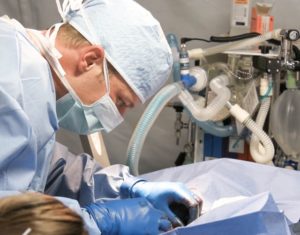No matter where in the world you are earning your medical degree, you have to meet a certain set of core credit requirements — but you also have the opportunity to make choices when it comes to how you earn your elective credits. If you have your sights set on entering a US medical residency program after medical school, fulfilling elective credits with a clerkship in the United States offers a wide range of benefits, from both an academic and a practical standpoint. Read on to learn more about why foreign medical students are choosing US-based clerkships for their clinical electives.
Enhancing Your Academic Experience in Medical School
A clerkship in the United States offers an exciting and challenging academic experience that you can’t always get from the standard electives offered at your medical school. For instance, while you are completing your medical school courses, you may discover a passion for a medical subspecialty in which few physicians in your area have significant expertise. By choosing a US-based clerkship as a clinical elective, you could spend three months gaining hands-on experience with three different Attending Physicians who have dedicated their careers to the subspecialty. This would enable you to explore the subject in-depth and gain real-world experience that you wouldn’t be able to get at your medical school.
Alternatively, if you haven’t yet decided on your subspecialty area, there are clinical clerkships in the United States that empower you to explore three different specialty areas over the course of three months. Again, some of these clinical experiences could be in specialty/subspecialty areas that aren’t available in your area. In a US-based clerkship, you may also have the chance to decide between inpatient and outpatient availabilities — another choice that is not available at every foreign medical school.
Even if your medical school does offer electives in your specialty area of interest, it still makes sense, from an academic standpoint, to complete a US-based clerkship if you plan on applying for a US medical residency program in the future. A clinical elective also offers a real-world introduction to the complexities of the US healthcare system, which is a valuable learning experience for foreign medical students who aspire to enter US medical residency programs. The healthcare system in every country is different, and you can learn a lot about what it truly means to practice medicine in the United States over the course of a three-month clerkship.
Practical Considerations for Your Residency Application
For foreign medical students who are planning to enter a US medical residency program after graduation, earning clinical electives through a US-based clerkship makes even more sense from a practical standpoint. Completing a clerkship does not guarantee that you will be matched to a US medical residency program, but it can give you opportunities that will make you a more competitive candidate and help you throughout the application process. Here are a few of the things you would get to do during a clinical clerkship:
- Make connections with US-based Attending Physicians. Some US medical residency programs require at least one Letter of Reference to be written by an Attending Physician in the United States. During a clerkship, you may be able to develop a positive working relationship with an Attending Physician who could potentially write you a letter of reference in the future.
- Gain experience in a subspecialty area (or multiple areas) of interest. When you are writing your Personal Statement, you need to be able to lay out a clear set of professional goals and explain why you are a great candidate for a US medical residency program. If you already have experience working in the United States in your specialty or subspecialty area of interest, you can make a much stronger argument.
- Start preparing for the USMLE. Before you can apply for a US medical residency program, you need to get certification from the Educational Commission for Foreign Medical Graduates (ECFMG) — and for that, you have to pass the USMLE Step 1, Step 2 – C2, and Step 2 – CK exams. The knowledge and skills you gain in a clerkship can help you prepare for success on these exams.
- Learn what it’s like to live in a certain region of the United States. Because the United States is a large country with diverse regions, it is impossible to give a simple explanation of “what it’s like to live in the United States.” During a clerkship, you will have the chance to find out about the lifestyle of a medical resident in a particular location, which may help you narrow down your residency application choices based on regional considerations or a preference for an urban or rural residency program.
FMG Portal offers top-notch US-based clerkships for foreign medical students who want to earn elective credits in the United States. Contact us today to learn more about what makes our programs stand out!

